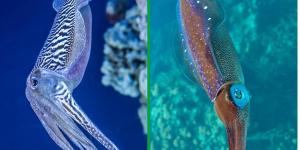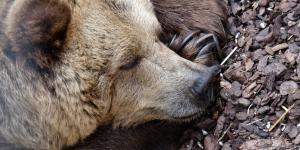Wild animals
65 articles

Amphibians are a remarkable class of vertebrate animals that occupy a unique ecological niche in the animal kingdom. Their name, "amphibian," hints at their dual life, as these fascinating creatures often bridge the gap between aquatic and terrestrial habitats. With a lineage dating back hundreds of millions...

There are various species or types of crabs, including the brown crab (Cancer pagurus), red king crab (Paralithodes camtschaticus), red reef hermit crab (Paguristes Cadenati ), coconut crab (Birgus latro), New Zealand pea crab (Pinnotheres sp.), blue swimmer crab (Portunus pelagicus), sponge crab (Dromia...

Passerines are commonly known as perching birds. They are the birds which make up the order known as Passeriformes. Within this order is a great diversity of birds, but they all have certain traits in common. Specifically, they have an arrangement of their feet which make it easier for them to perch on trees...

There are several species or types of octopus, such as the common octopus, the greater blue-ringed octopus, the dumbo octopus, the giant octopus, the mimic octopus, the Caribbean reef octopus, the big blue octopus, the Atlantic white-spotted octopus, the star-sucker pygmy octopus and the common blanket octopus.
Octopuses...

The different types of flamingos include the American flamingo (Phoenicopterus ruber), Chilean flamingo (Phoenicopterus chilensis), Andean flamingo (Phoenicoparrus andinus), puna or James's flamingo (Phoenicoparrus jamesi), greater flamingo (Phoenicopterus roseus) and the lesser flamingo (Phoeniconaias minor).
All...

The size of the queen bee is around 2 centimeters or 0.8 inches, although this can depend on various factors. This makes them by far the largest bee in a colony. This is very important since they play a fundamental role in the survival of a hive. It allows them certain functions which other bees cannot perform....

Mediterranean Jellyfish include species such as the compass Jellyfish (Chrysaora hysoscella), common jellyfish (Aurelia aurita), warty sea wasp (Carybdea marsupialis), Portuguese man o' war (Physalia physalis), blue button (Porpita porpita), Mediterranean jellyfish (Cotylorhiza tuberculata), barrel jellyfish...

You may already be familiar with this adorable creature, or perhaps its charming smile caught you by surprise in the picture. But did you know that since 2013, the quokka has been officially recognized as the happiest animal on the planet? These small, endearing Australian mammals have gained significant...

Some of the most common types of mosquitoes include the common house mosquito, tiger mosquito, malaria mosquito and insects you may not have known were mosquitoes, such as sandflies. Mosquitoes are known for their bloodsucking behaviors, something that only females of all the different types of mosquitoes...

Ruminants have long been a subject of fascination for scientists and farmers due to their incredible ability to convert low-quality, fibrous plant material into high-quality animal protein. This adaptation enables them to thrive on diets that would be impossible for most other animals to digest. At the...

Lionfish are some of the most recognizable fish due to their ornate fin orientation which includes many pointed spines. Although undoubtedly beautiful, they are also one of the most venomous fish in the world and great caution is required if we were to come across one while swimming. Although they have...

Flies, belonging to the order Diptera, are one of the most abundant and diverse groups of insects found across the globe. The life cycle of flies is marked by rapid growth and remarkable reproductive capabilities. Flies are known for their short lifespan, but their ability to reproduce quickly ensures...

Copepods are tiny aquatic crustaceans that play an important role in the ocean food chain. They are considered one of the most abundant groups of animals on the planet and are found in virtually every aquatic environment, from freshwater lakes and rivers to the depths of the ocean. Copepods are an essential...

The diversity of marine life is incredible, much of which has yet to be explored or even seen with human eyes. What we do know has been based on many years of meticulous and often dangerous research thanks to the perils of the ocean depths. Fortunately, we have been able to discover and taxonomically...

Especially as we get older, we can find remaining in one place too long to be problematic. Simply getting off the couch after a long movie can leave us stiff and awkward. In this context, it is quite amazing that some animals are able to spend months on end barely moving at all in a state of torpor. Without...
